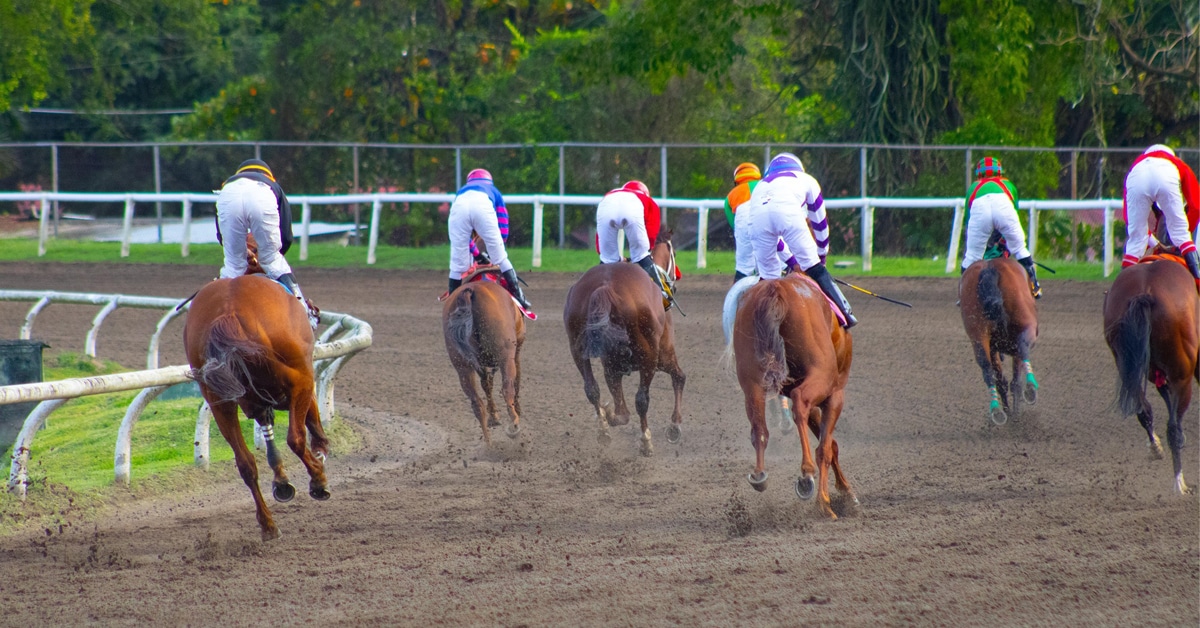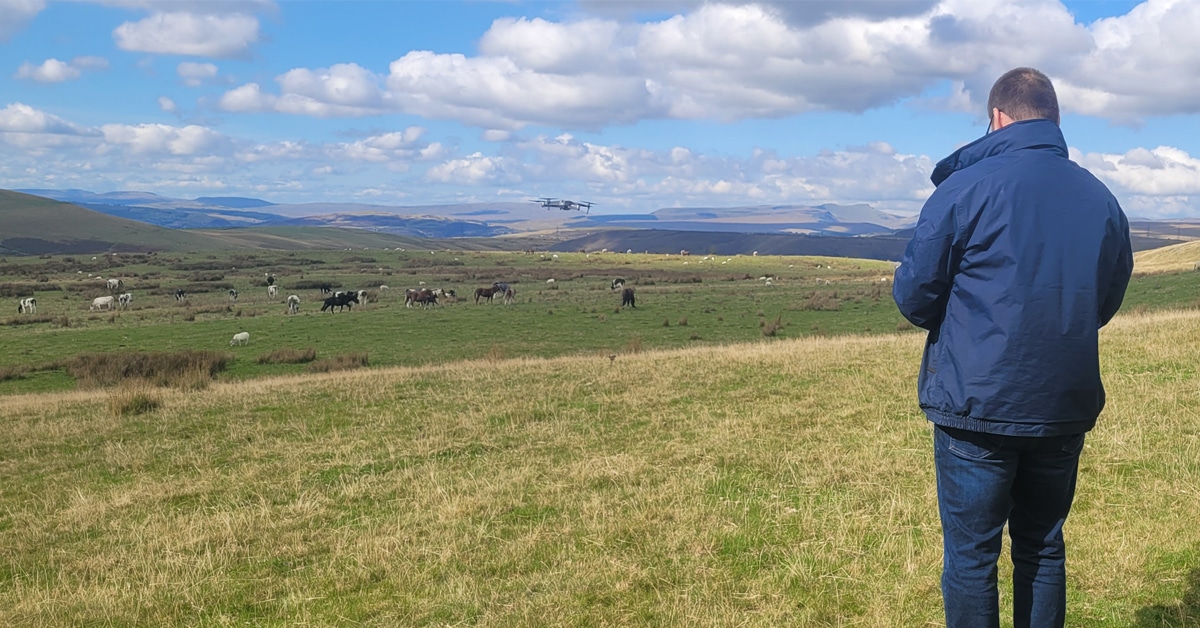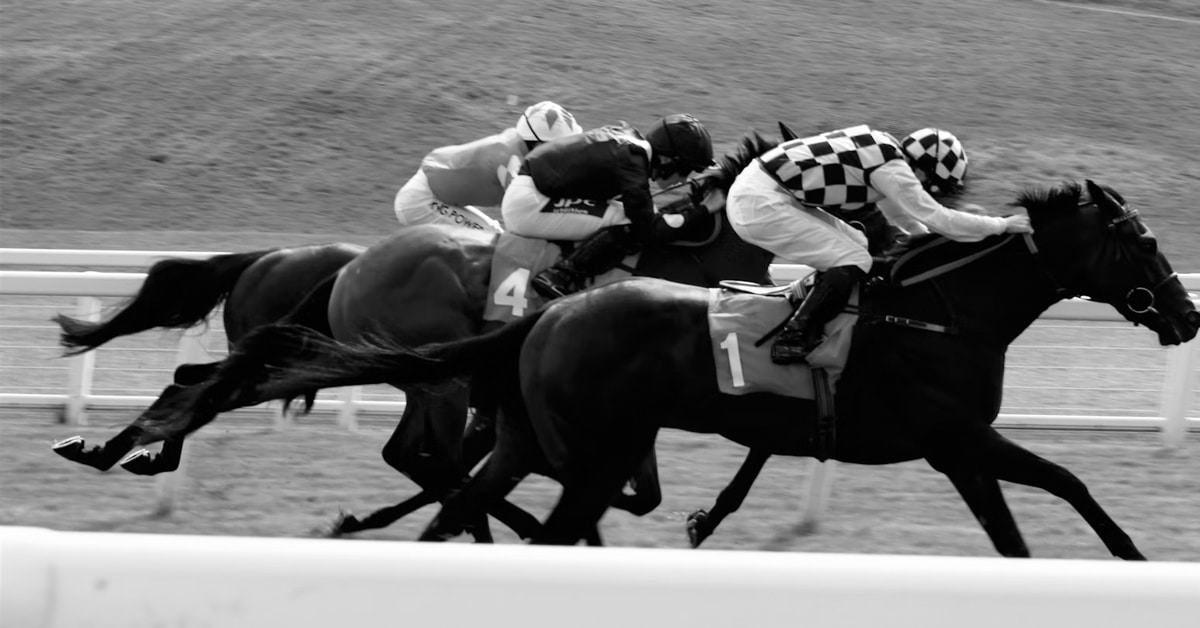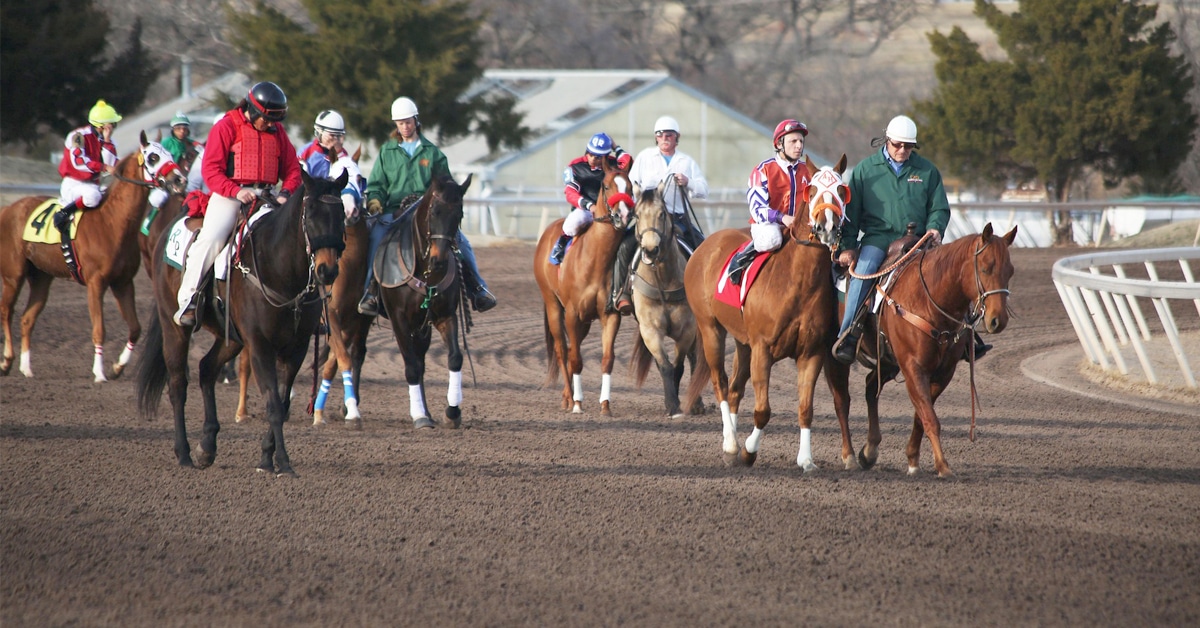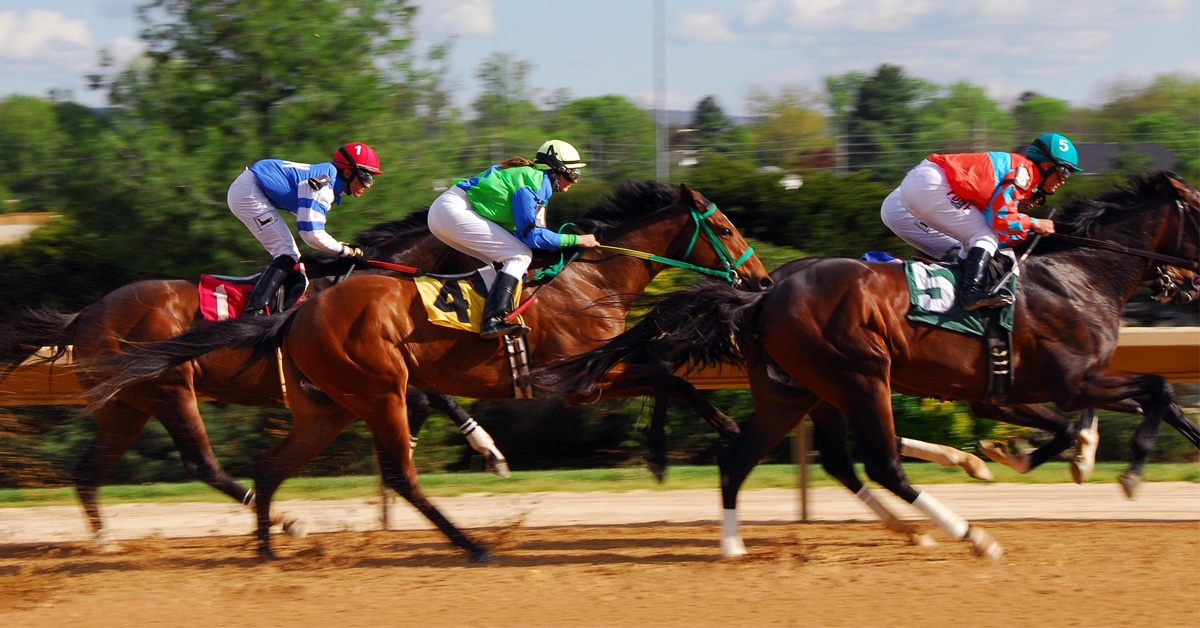Many people believe in the practice of desensitizing a horse through a process known as “sacking out,” which involves the repeated or continual application of a pressure, usually until the horse stops overtly reacting to the pressure and often even beyond that point. While the goal is to teach the horse to be less reactive, this form of desensitizing puts the horse in a state animal behaviourists call “learned helplessness.” What this means is that an animal forced to endure a stressor essentially gives up after a while, then doesn’t try to flee or fight a similar pressure in the future because they have learned that they have no control over what happens to them.
While you can certainly teach a horse to put up with many forms of pressure through such techniques, I find that horses trained this way will often either shut down mentally or maintain a degree of internalized worry that is likely to manifest in some other way. That worry can come out when least expected, and may be why some supposedly calm, well-trained horses appear to suddenly blow up “out of the blue.”
Because my goal is to achieve a partnership based on connection and meeting the horse’s needs, I take a different approach to helping a horse learn how to deal with pressures. I build the horse’s confidence by showing him that he can control virtually any stressful situation by staying mentally present with me and remaining soft in his responses. Once a horse believes that he can control pressure, he becomes calmer, less reactive and more able to listen to my requests, regardless of what is going on around us.
This training also deepens my relationship with the horse, as he learns that sticking with me makes the world a much less frightening place. Eventually, even unfamiliar pressures will not cause the horse much concern, as he trusts his own ability to handle whatever may come, especially when I am around. I believe that empowering the horse in this way, rather than forcing him to merely endure pressures he can’t escape, creates the safest, happiest and most enjoyable equine partner.
One of the methods I use to start this process is teaching the horse to differentiate between what I call the “Four Intentions of Pressure.” This involves using the same aid (I use a flag) to call the horse’s attention to four different intentions within me: Draw, Drive, Not for You and Praise.
Learning to distinguish these four intentions helps the horse to think under pressure instead of simply reacting to it. He also learns that he can look to me and read my intention to guide him in his responses to pressure. However, we must remember that before we apply pressure with an aid, we need to be clear within ourselves what we want the horse to do or not do, and we have to project that intention outward, toward the horse so that he can receive and respond to it. When used in this way, the application of an aid gives support to our intention, which helps the horse learn to tune in to our intention, not the aid itself.
The intention I work on first with most horses is Draw, in which you apply a pressure to bring the horse’s mind to you, then release that pressure when he focuses on you. Once I have established that, I move on to Drive, which is a use of pressure that asks the horse to move away.
After you have worked through Draw and Drive, you are ready to try Not for You. In this exercise, the horse learns that you might use a pressure, but if your intention is not directed at him, he doesn’t need to respond to the pressure. This is a hugely important training element, as it teaches the horse that pressures in the world often have no impact on him, and are not a cause for concern. Horses that understand this are far less spooky, even when encountering something unfamiliar.
I start the exercise with neutral intention, then give my flag a little shake off to one side. As I am not asking the horse to leave, I don’t want him to. If he leaves, I keep shaking the flag in the same way, turning with him as he moves around me. If he stands quietly or as soon as he stops his feet and looks my way, I stop shaking the flag. What you don’t want to do is lower your pressure because it worried the horse and made him move off, nor do you want to increase it as “punishment.” This is critical, because allowing the reactions of the horse to dictate our use of pressure will only feed his natural tendency to flee from pressure, rather than building his confidence by helping him learn to think through it.
If the horse does stand and stays relaxed, I drop my pressure after a moment or two to reward the horse for staying still, then wait a bit before repeating the exercise and perhaps increasing the “not for you” pressure if he is ready for that. If at any point the horse stands, but gets tense, I will ask him to relax/soften by adding a bit of downward pressure on the lead line, something I will generally have taught the horse how to do prior to doing this type of work.
The next step is to have the flag actually touch the horse. I use my flag to stroke him in places that feel good to him, such as around the shoulders and withers. This is the fourth intention, which I call Praise. While doing this, I project a calm and peaceful energy, encouraging relaxation. This further clarifies for the horse that an aid is not something to fear, and it deepens his understanding that he can look to my intention for guidance. If the horse tenses or moves away when I am touching him with the flag, I will try to keep my flag in the same relative position until he relaxes or at least stops his feet, then take the flag away.
While the Four Intentions desensitization work helps a horse learn to remain calm under pressure, we can take that development even further with other exercises that build the horse’s confidence. One way to do this is to teach him he can “control” something you know is likely to make him a little bit nervous, such as a moving tarp. I like to start this work on the ground with me leading the horse, then repeat the same exercises mounted. In both instances you will need a helper, ideally someone mounted on a horse that is quiet, calm and confident, but if your helper is on foot, that is okay.
I start the tarp exercises by asking my horse to follow a tarp tied to a rope being dragged by the helper. If you start by having the tarp follow the horse or come toward him, he is likely to click into a self-preserving mindset, as it is natural for the horse to flee from something frightening. We want to change things up and put the horse into an empowered mindset by having him follow something he would normally fear.
In the beginning, allow the horse to follow the tarp at whatever pace and distance he feels comfortable with, and don’t force him to get too close. Simply support the horse to follow the tarp, keeping your seat and hands relaxed (if mounted) and letting your own confidence flow through to your horse. You want to create a sense for the horse that he is making the tarp move away, which makes him feel in control. Once a horse believes he can control something, he soon feels that he doesn’t need to, as a controllable thing is not scary.
For the next step, move up to walking next to the tarp for a bit, then circle back to follow it again if your horse starts to worry. If you are doing this exercise with your horse in hand, keep yourself between the tarp and the horse so that if he feels the need to move away from the tarp, he does not come over you. When walking next to the tarp is no longer a concern, move up to where the tarp is further back than the horse, once again rolling back to follow the tarp if needed. You can also opt to stop your horse and let him watch as the tarp moves ahead of him or even circles around him, then follow it once again. When he is more relaxed, work again on having the tarp following behind him.
Once the horse is comfortable with your helper dragging the tarp behind him, you will move to the next step: taking control of the tarp yourself and dragging it without a helper. When I have control of the tarp, I will walk straight lines and also make turns and circles around the tarp. When circling around the tarp, the tarp stays to the inside, well away from the horse, and the rope does not touch him.
However, I will eventually want to start circling the other direction, which means that the tarp is going to cross behind the horse and appear in his other eye, and the rope may also touch his hind end or legs. It is, therefore, very important to have done some work getting your horse comfortable with ropes touching him around the back end before doing these tarp exercises, as you don’t want the feel of a rope to be new and scary too. It is also critical for your own safety to be sure that there is spatial clarity between you and the horse before you do this exercise on the ground. This means that all the parts of the horse – shoulders, hips, barrel, will soften away from you when you ask them to, and there is no sense that the horse would move through you if he was worried about something on his other side.
When your horse no longer worries about the tarp during these ground exercises, it is great to work on them mounted as well, as long as you already have the ability to get a soft response from your horse when you ask for a change. I recommend starting at the beginning again, just following the tarp, and circling back as needed. Once you are sure that the horse feels confident doing that with you in the saddle, moving on to riding beside the tarp, then to dragging the tarp and circling in both directions. Remember that in both the groundwork and the mounted exercises, you want to practice having the tarp on both sides. Don’t be surprised if one side is easier for the horse than the other, as this is quite common.
While these exercises are just a starting point, a horse that has been well guided through this type of mental development work is in a good position to handle other unfamiliar situations with confidence. Whether the scenario is seeing cattle for the first time or negotiating a new kind of trail obstacle, a horse that can think through pressure and remain in control is a horse you will want to ride.
BONUS VIDEO
Josh has created a video to accompany this article, describing the Four Intentions of Pressure. Check it
out on YouTube here.
The Latest

